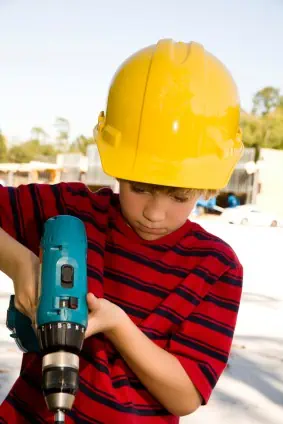Project-based Learning
Have you heard the term project-based learning lately and wondered what all the buzz is about? Project-based or project-led learning is a term coined to describe the learning that results when students are working to solve real-world problems and challenges. It is doing something with a purpose, and it absolutely engages students.
I mentioned in our earlier series concerning teaching middle schoolers that middle school is not the time to discount activity-based learning. And that especially applies to those wiggly boys you have!
Does this mean there are no more books? Absolutely not! It just means designing activities to illustrate and demonstrate what students are learning. And if the project has usefulness beyond homeschooling, the more valuable and long-lasting the learning tends to be.
But you can certainly tie in what you are learning about in school with a “real-world” project:
- Build a water-filtration system when you’re studying a water-poor area such as North Africa
- Design and build a raised bed for growing vegetables when studying inner-city areas without much land
- Set up a program for homeschooled kids in your area to regularly visit and hang out with the elderly in hospitals or assisted living facilities as a service project.
This is also a fantastic way to expose your students to different types of activities. This can be one of the best ways to discover the types of activities that inspire your students!
What other kinds of projects would boost your students’ learning?
Let’s say your student has shown a little interest (or you have an interest) in woodworking. This would be a great project to tie into a study of Colonial History or the Westward Expansion periods when many people made their own homes and furniture.
How about building a chair that can actually be used by your student or someone else? Or perhaps a workbench that could be used by the family or a little brother or sister, depending upon the scale?
 Of course, your student would be involved in:
Of course, your student would be involved in:
- Researching how to accomplish this task and taking notes (language arts),
- Figuring how much of what materials would be needed (math)
- Observing others involved in this endeavor (social skills, field trips)
- Reading about how others in history built their own furniture (language arts, history)
- Learning how to use building tools (science and technology)
- Documenting the building progress (writing, photography)
Perhaps your child enjoys this activity is so much that it turns into a side business! (Then he’ll learn MANY other things!)
Another project suggested during our Middle Ages unit is to study gardening and create an herb garden, as herbs were used during that time for everything from perfume to medicine.
Growing herbs to be used in the family’s cooking or to sell to the neighbors or at a farmer’s market would be a wonderful project and involve reading, writing, planning, logical thinking, and more.
would be a wonderful project and involve reading, writing, planning, logical thinking, and more.
Not to mention the regular discipline the maintenance of a garden would require.
Additional Project Ideas Corresponding with History Study
- Making corn husk dolls, hand-dipped candles, or rag rugs also fits nicely into a Colonial unit and your student could use them as Christmas or birthday gifts.
- Learning how to take care of a car fits nicely into the Immigration unit and could involve studying the history of cars, the technology involved in their production and maintenance, and the costs involved in car ownership. Very practical stuff!
Let’s take advantage of the time and freedom we have in home education and give our students the opportunity to do some real-world and project-based learning. When your students’ projects capture their imaginations, you’ll be amazed at what they learn!
We would love to hear what kind of projects your kids have enjoyed while you have been homeschooling!
Blessings on your home school,
![]()

